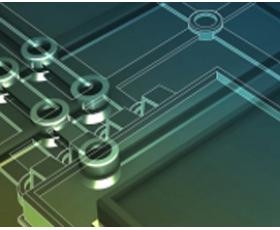PAM-XIAMEN can offer InAlN HEMT( Indium Aluminium Nitride High Electron Mobility Transistor) structure on 8-inch silicon. InAlN band gap is a direct band gap, and InAlN HEMT is used in producing electronic and photonic devices. It is one of the III-V group of semiconductors. As an alloy of indium nitride and aluminum nitride, InAlN is closely related to gallium nitride, which is widely used in semiconductor industry. Due to its ability to maintain operation at a temperature over 1000°C and the large direct band gap, it will be suitable for situations, which need a condition with good stability and reliability. Therefore, the application of InAIN bandgap in the space industry is paid more attention. Owing to the lattice matching ability of InAlN and GaN, InAIN HEMT on silicon is an attractive candidate for such a industry.

1. Specifications of InAlN HEMT
PAM-210414-INAIN-HEMT
| Substrate: | |
| Size | 8 inch |
| Material | Si |
| Diameter | 200.0 ± 0.25 mm |
| Resistivity | > 5,000 Ω·cm Si
|
| Thickness | 725 ± 25 μm |
| Epitaxial layer | |
| Structure | 10nm ±10% In0.17Al0.83N barrier layer;
0.8nm ±10% Aluminum Nitride (AlN) spacer layer |
| Grow method | metal organic chemical vapor deposition (MOCVD) |
| Frontside | no dirt, no chipping,no cracks, no slips |
| Backside | no chipping, no protrusion |
| Average sheet resistivity | < 300 (Ω/sq.) |
2. About the Epitaxial Growth of InAlN
Epitaxial growth of InAlN by metal organic chemical vapor deposition or molecular beam epitaxy with other semiconductor materials (such as gallium nitride, aluminum nitride and related alloys), as an active composition, is to produce semiconductor wafer. Because of the quite different properties between aluminium nitride and indium nitride, InAIN is a material that is difficult to grow epitaxially. The resulting narrow optimized growth window may lead to contamination (like indium gallium aluminum aluminum production) and poor crystal quality. Meanwhile, device manufacturing technologies optimized for AlGaN devices should be adjusted to solve the problems caused by the different material properties of InAlN.
For more information, please contact us email at victorchan@powerwaywafer.com and powerwaymaterial@gmail.com.

